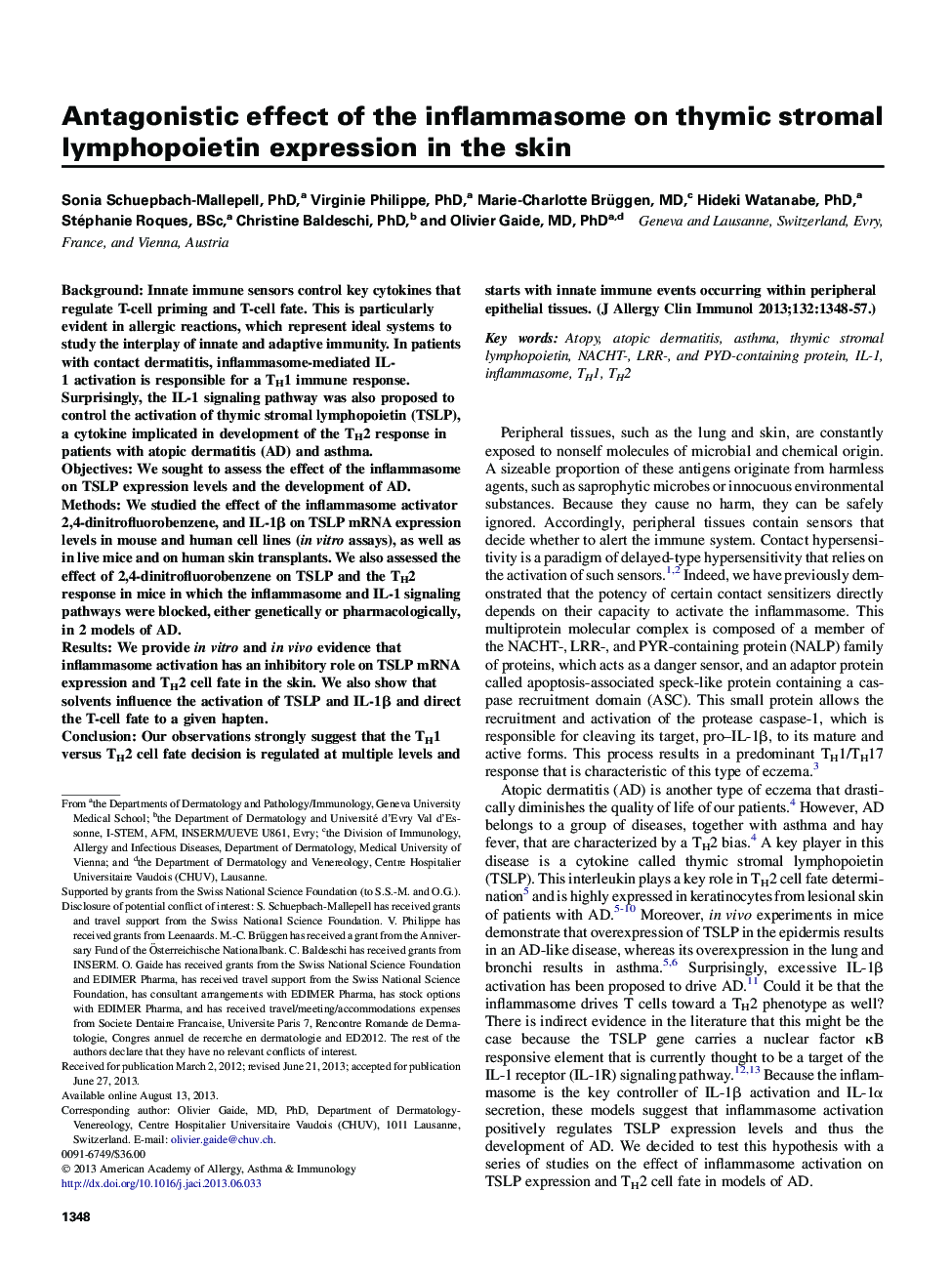| کد مقاله | کد نشریه | سال انتشار | مقاله انگلیسی | نسخه تمام متن |
|---|---|---|---|---|
| 3197810 | 1201870 | 2013 | 10 صفحه PDF | دانلود رایگان |

BackgroundInnate immune sensors control key cytokines that regulate T-cell priming and T-cell fate. This is particularly evident in allergic reactions, which represent ideal systems to study the interplay of innate and adaptive immunity. In patients with contact dermatitis, inflammasome-mediated IL-1 activation is responsible for a TH1 immune response. Surprisingly, the IL-1 signaling pathway was also proposed to control the activation of thymic stromal lymphopoietin (TSLP), a cytokine implicated in development of the TH2 response in patients with atopic dermatitis (AD) and asthma.ObjectivesWe sought to assess the effect of the inflammasome on TSLP expression levels and the development of AD.MethodsWe studied the effect of the inflammasome activator 2,4-dinitrofluorobenzene, and IL-1β on TSLP mRNA expression levels in mouse and human cell lines (in vitro assays), as well as in live mice and on human skin transplants. We also assessed the effect of 2,4-dinitrofluorobenzene on TSLP and the TH2 response in mice in which the inflammasome and IL-1 signaling pathways were blocked, either genetically or pharmacologically, in 2 models of AD.ResultsWe provide in vitro and in vivo evidence that inflammasome activation has an inhibitory role on TSLP mRNA expression and TH2 cell fate in the skin. We also show that solvents influence the activation of TSLP and IL-1β and direct the T-cell fate to a given hapten.ConclusionOur observations strongly suggest that the TH1 versus TH2 cell fate decision is regulated at multiple levels and starts with innate immune events occurring within peripheral epithelial tissues.
Journal: Journal of Allergy and Clinical Immunology - Volume 132, Issue 6, December 2013, Pages 1348–1357